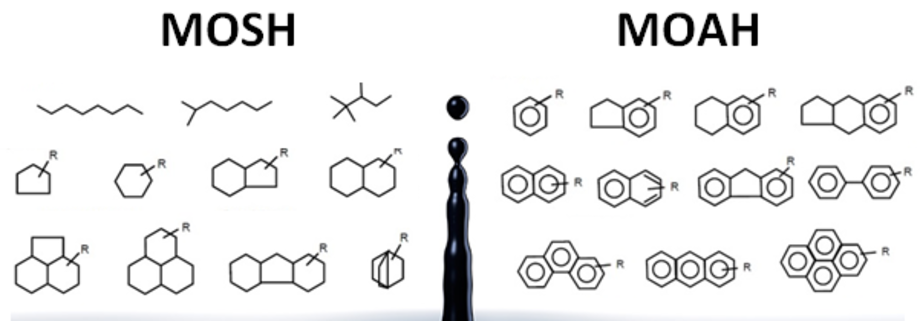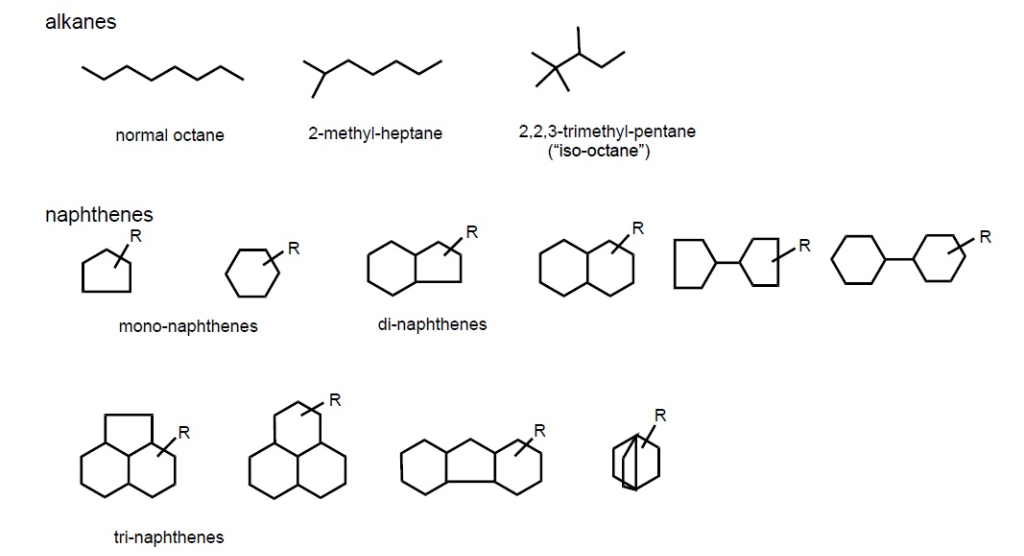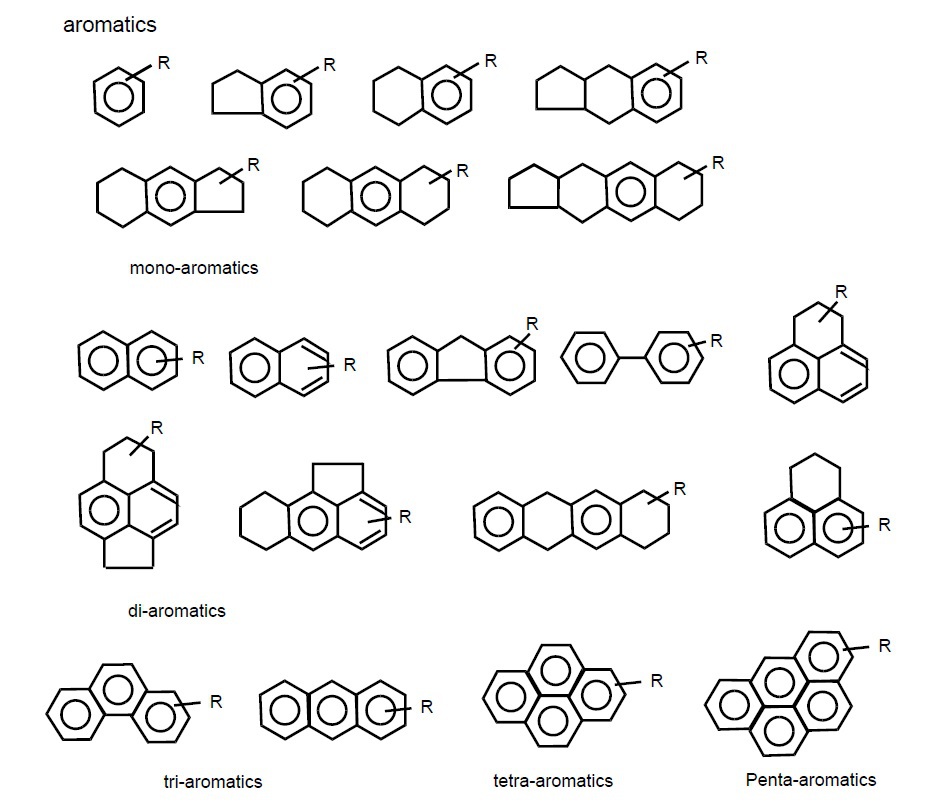
Mineral oil hydrocarbons
Mineral oil hydrocarbons (MOH) originated from newspaper-related printing inks and other sources are introduced into cardboards during the recycling process of waste paper. These recycled cardboards are used as food packaging and can release mineral oil components into the food. Further Sources can be the printing ink of the packaging itself and contaminations during the manufacture of the food.
The prevention of MOH contamination from recycled cardboard can be implemented through different ways. On the one hand, it is possible to use functional barriers incorporated in inner pouches or coatings to minimize the migration. On the other hand, the usage of other materials can rule out the entry of MOH from recycled board from the beginning.
MOSH
Mineral oil saturated hydrocarbons (MOSH) are mineral oil components. They consist of a complex mixture of saturated hydrocarbons with open-chain or naphthenic structure.
These compounds could be problematic referring to toxicological issues. Besides the general burden to the human body, they can accumulate up to 10 g per person, especially in certain tissues (liver, lymph nodes and fat tissue). The relevant molecular weight distribution ranges between roughly 230 and 500 Da, which correspond to a chain length of C16-35.
EFSA categorized MOSH as substances with a potential concern. A TDI was not launched due to a uncertain data situation. The BfR, especially the BeKo, released recommendations for food as follows:
MOSH, chain length C10-16: 12 mg per kg food
MOSH, chain length C17-20: 4 mg per kg food
MOAH
Mineral oil aromatic hydrocarbons (MOAH) are also mineral oil compounds analogous to MOSH. Contrary, these substances are a mixture of highly alkylated aromatics with at least one aromatic ring system.
Some compounds of this group are assumed to be genotoxic similar to polycyclic aromatic hydrocarbons (PAH). EFSA remarked a potential concern and referred, that a safe daily dose for MOAH cannot be defined.
Synthetic hydrocarbons
The manufacture of polymers leads commonly to a broad molecular weight distribution of the synthesized products. Hence, low molecular substances are able to diffuse from the polymer matrix into the environment, which is known as undesirable migration relating to food contact materials. These synthetic hydrocarbons can be mistaken for MOSH/MOAH during routine analysis.
Polyolefin oligomers
The most used polymers for food packaging are polyolefins. In the past, it was shown that polyolefin oligomeric hydrocarbons (POH) can migrate from the packaging into the food. These substances consist of polyolefin oligomeric saturated hydrocarbons (POSH) and polyolefin oligomeric monounsaturated hydrocarbons (POMH).
A toxicological evaluation of these oligomers was not performed up to date, whereby an acute risk to the consumer is improbable. However, a possible accumulation of POSH in the human body was not ruled out yet.
Hydrocarbons from tackifier resins
The usage of hot-melt adhesives (HMA) in cardboard folding boxes can result in a migration of saturated and aromatic hydrocarbons from the HMA into the food via gaseous phase. The predominant source of contamination with these synthetic hydrocarbons was designated to the hydrocarbon resins within the HMA formulation. Hydrocarbon resins are generally used as tackifiers in various adhesives.
Hydrogenated hydrocarbon resins (‘petroleum hydrocarbon resins, hydrogenated’) are listed in Reg. (EU) 10/2011 as FCM No. 97 and are not restricted (no SML).


